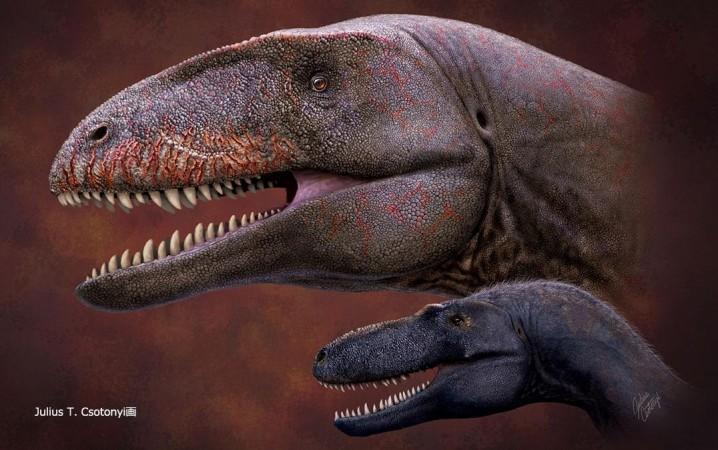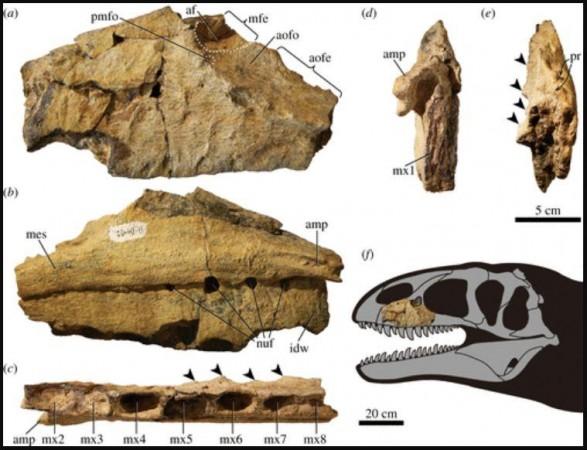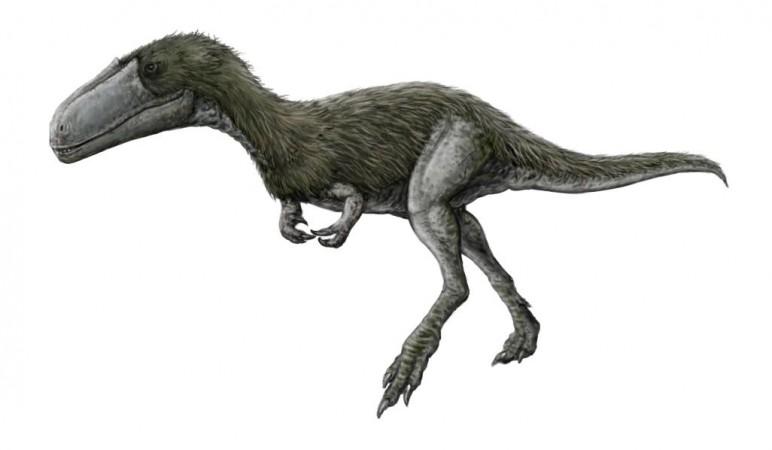Thanks to the Jurassic Park franchise, T-rex is perhaps the most iconic and popular of all dinosaurs discovered. It is believed that T-rex, and others species closely related to it—known as tyrannosauroids—held a superior position within the pre-historic food chain.
However, before their rise to the top ranks, dinosaurs known as carcharodontosaurians dominated the scene. Now, scientists have discovered a new species of carcharodontosaurian in Uzbekistan.
In a new international study, researchers have described a new species of dinosaur named Ulughbegsaurus uzbekistanensis. The fossil was unearthed in the Kyzylkum Desert in Uzbekistan. It led not only to the discovery of a new species but also the institution of a new genus, Ulughbegsaurus. Based on its size estimations, larger than an African elephant, the authors posit that it likely eclipsed other dinosaurs in the food chain of the early Late Cretaceous ecosystem.
"The discovery of Ulughbegsaurus uzbekistanensis fills an important gap in the fossil record, revealing that carcharodontosaurians were widespread across the continent from Europe to East Asia," said Dr. Yoshitsugu Kobayashi, senior author of the study, in a statement. The findings were published in the journal Royal Society Open Science.
A New Species, A New Genus

Ulughbegsaurus uzbekistanensis was discovered in the lower Upper Cretaceous Bissekty Formation of the Kyzylkum Desert in Uzbekistan. Thus, it roamed these lands around 90 million years ago. What makes the U.uzbekistanensis particularly special is that its discovery resulted in the creation of a new genus within the superfamily Carcharodontosauria (whose members are called carcharodontosaurians). Carcharodontosaurus literally translates to 'Shark-toothed lizard'.
The newly-constituted genus, Ulughbegsaurus, gets its name from the multi-faceted Ulugh Beg, the 15th Century Sultan of the Timurid Empire of Central Asia. Along with being a ruler, Beg was also an accomplished astronomer, mathematician, and intellectual. As the fossil was discovered in Uzbekistan, which was once part of the Timurid Empire, the scientists named it in his honor.
Carcharodontosaurians reached massive sizes. They measured between 8 m to 14 m (26 ft to 46 ft) in length and weighed 6,000 kgs to 15,000 kgs (19,690 lbs to 49,210 lbs). They belong to a large clade of dinosaurs known as Theropoda—a lineage of which other well-known carnivores such as Spinosaurus aegyptiacus, Tyrannosaurus rex, and Velociraptor mongoliensis are members. Theropods were characterized by their three-toed limbs and hollow bones.
Largest Carnivore Discovered in the Region

Explaining the process of identifying and cataloging U.uzbekistanensis, Dr. Kohei Tanaka, senior author of the study, said, "We described this new genus and species based on a single isolated fossil, a left maxilla, or upper jawbone. Among theropod dinosaurs, the size of the maxilla can be used to estimate the animal's size because it correlates with femur length, a well-established indicator of body size."
So how big was U.uzbekistanensis? The paleontologists estimate that it weighed over 1,000 kg (2,200 lbs) and was approximately 7.5 m to 8 m (24 ft to 26 ft) in length, much larger than a fully-grown African elephant. According to the team, two separate evolutionary examinations confirmed that the newly-identified dinosaur is the first conclusive carcharodontosaurian to be discovered in the Upper Cretaceous of Central Asia.
Also, U.uzbekistanensis' size is considerably larger than any other carnivorous dinosaur found at the Bissekty Formation. This includes a tyrannosauroid—belonging to the superfamily of theropods known as Tyrannosauroidea—called Timurlengia. It was a small theropod around 3m to 4 m (10ft to 13 ft) in length and weighing about 170 kgs to 270 kgs (370lbs to 600lbs). This means that U.uzbekistanensis topped the food chain in the ecosystem of the time.
'Ruling' Before T-rex and its Kind

While tyrannosauroids are famously known for holding the apex positions in the Late Cretaceous period, it is the carcharodontosaurians that 'ruled' before them. However, the likes of Ulughbegsaurus disappeared from the paleocontinent Laurasia (part of the supercontinent Pangaea around 335 to 175 million years ago) before the Late Cretaceous.
How these carcharodontosaurians died out continues to remain inadequately explained. Their disappearance is often attributed to the emergence of the tyrannosauroids as apex predators. Nevertheless, the scarcity of related fossils has left this eventual shift in dominance poorly comprehended.
"As one of the latest surviving carcharodontosaurians in Laurasia, this large predator's coexistence with a smaller tyrannosauroid reveals important constraints on the transition of the apex predator niche in the Late Cretaceous," emphasized Dr. Kobayashi.














